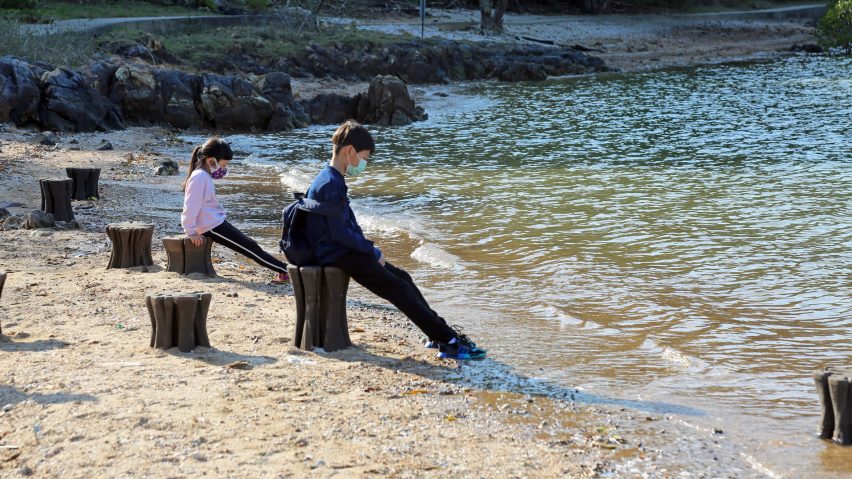
HKU's computer-designed Tidal Stools can be used by humans and sea creatures
Researchers at Hong Kong University's Robotic Fabrication Lab have developed a series of 3D-printed stools featuring complex shapes that provide comfortable seats while also sheltering marine animals.
The team at the Robotic Fabrication Lab HKU worked alongside the Centre for Chinese Architecture and Urbanism to design the Tidal Stools as a critical response to the way in which humans are redefining the coastline around Hong Kong.
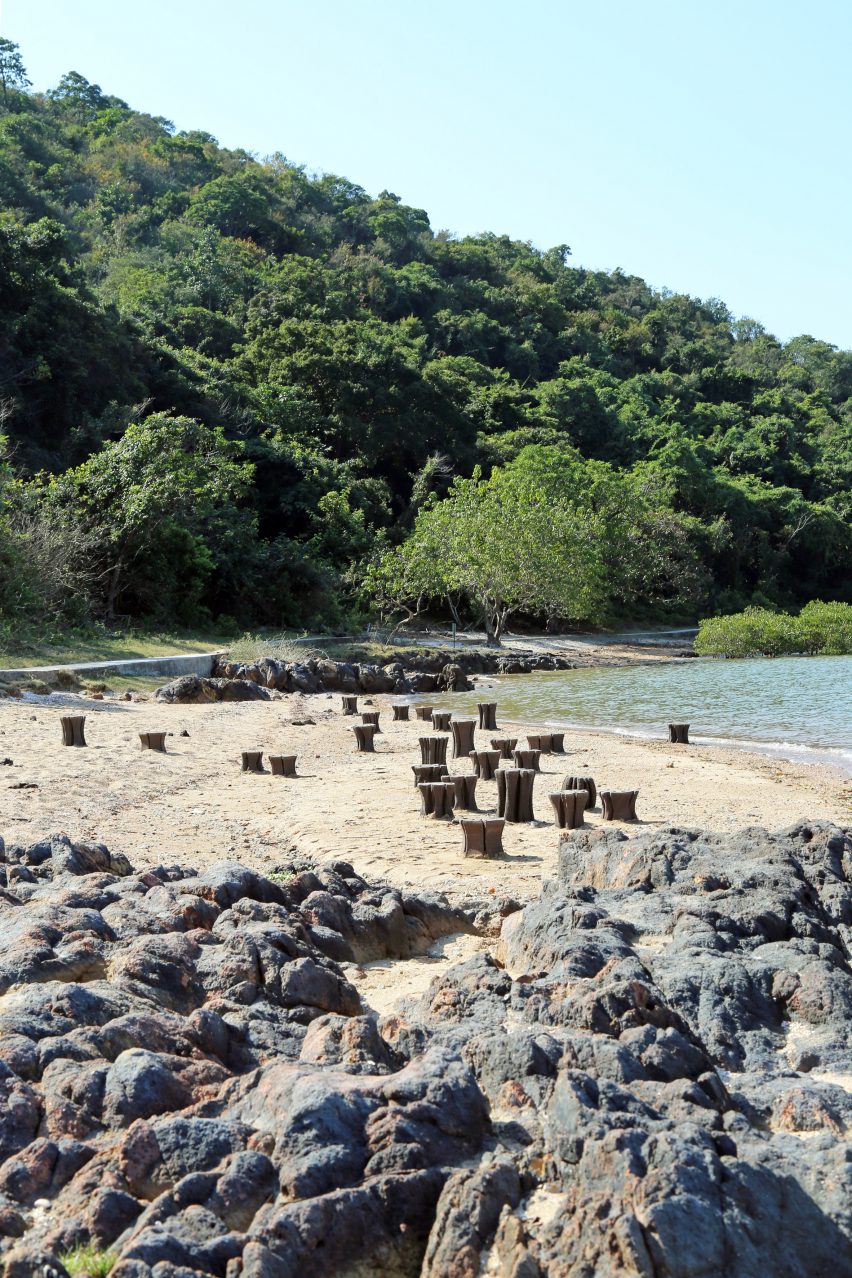
The reclamation of land from the sea to create space for new construction has altered the shape of the coast and destroyed existing habitats in many places.
The Tidal Stools aim to demonstrate how people can design products for their own use that also contribute positively to local ecosystems.
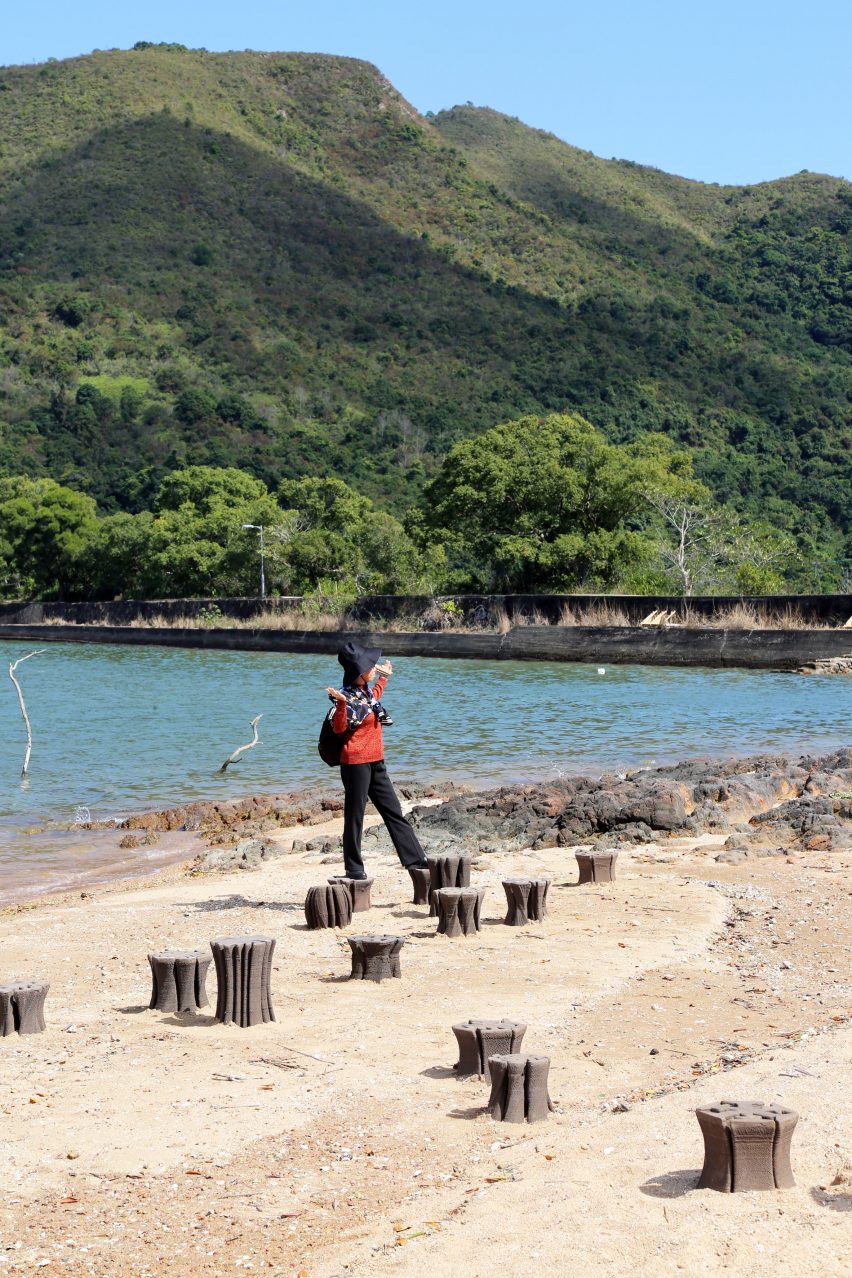
The stools are positioned so that villagers can use them to enjoy the view at low tide. At high tide, they are partially submerged and transform into hiding places for local marine life.
"In our anthropocentric world, we produce furniture objects that are primarily targeted at us humans," said the HKU team. "With its dual agenda, the Tidal Stool project offers an alternative approach to the production of design objects."
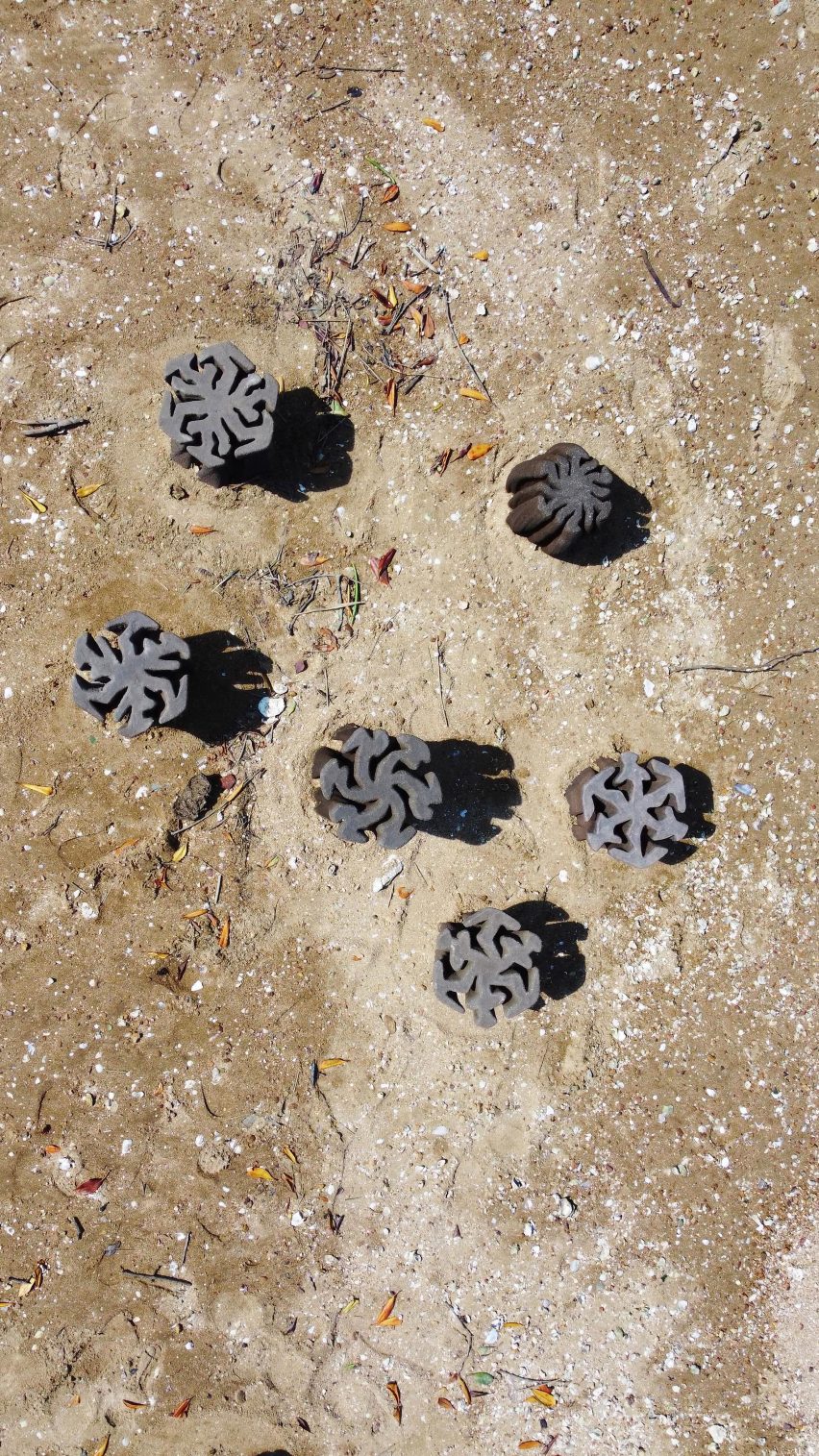
Tidal Stools features on the shortlist for the sustainable design category at Dezeen Awards 2022, alongside an inexpensive DIY air purifier and a kitchen mixer designed to be used with glass jars already in the home.
The stools' irregular forms incorporate various spaces and crevices that can be used by sea creatures to shelter from predators.
A robotic 3D-printing method was used to construct the complex shapes, which would be difficult to achieve with more traditional fabrication methods.
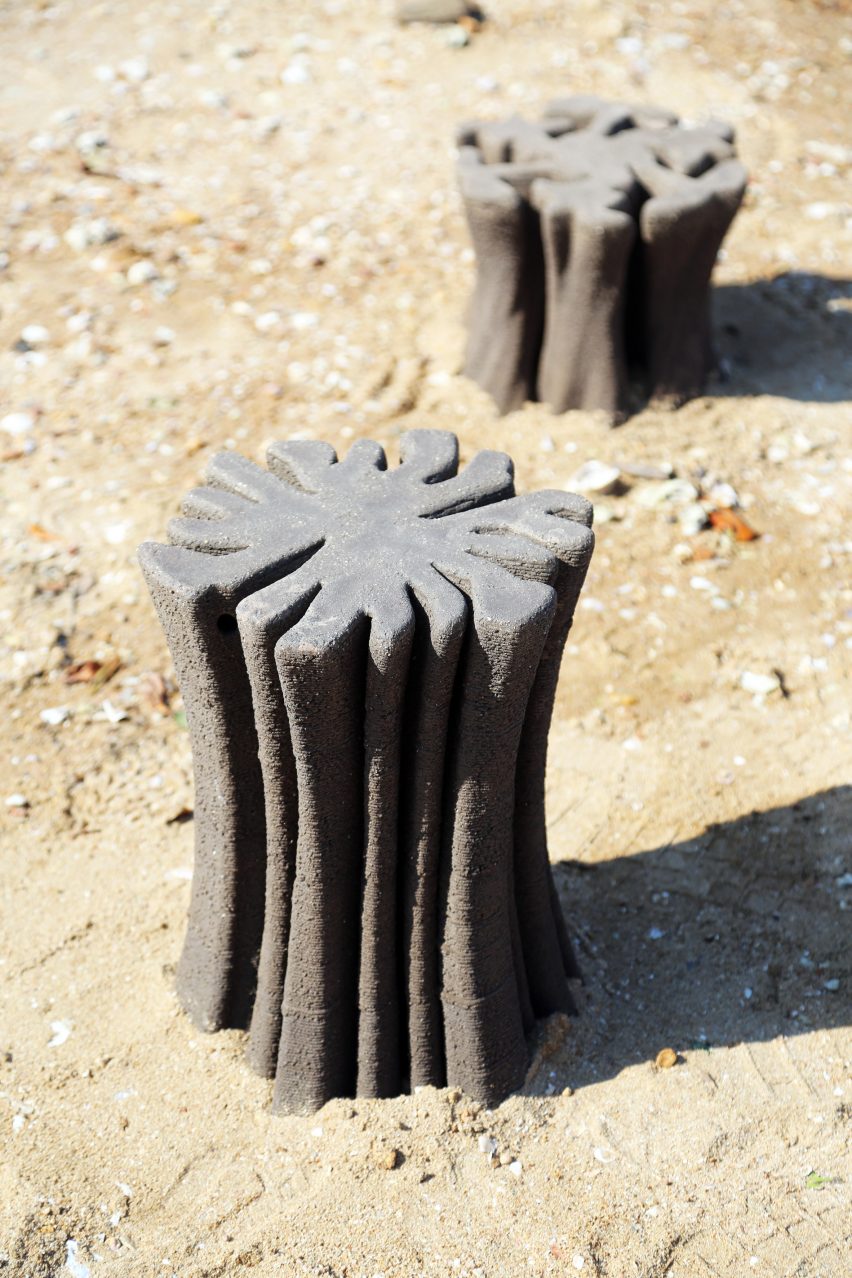
"Overall, the team produced 30 unique stools with different heights for different users and varying degrees of surface complexity," the designers added.
"The goal in producing the multiplicity of solutions was to understand which geometry would, in the end, perform best for the natural environment."
The team led by Christian J Lange and Weijen Wang developed the Tidals Stools as part of a larger conservation project focused on preserving the picturesque shoreline of Kuk Po village, Sha Tau Kok.
The designs reference the traditional ceramic stools that have been produced in China for more than 1,000 years. These simple, solid seats were used both indoors and outdoors, often in landscaped gardens.
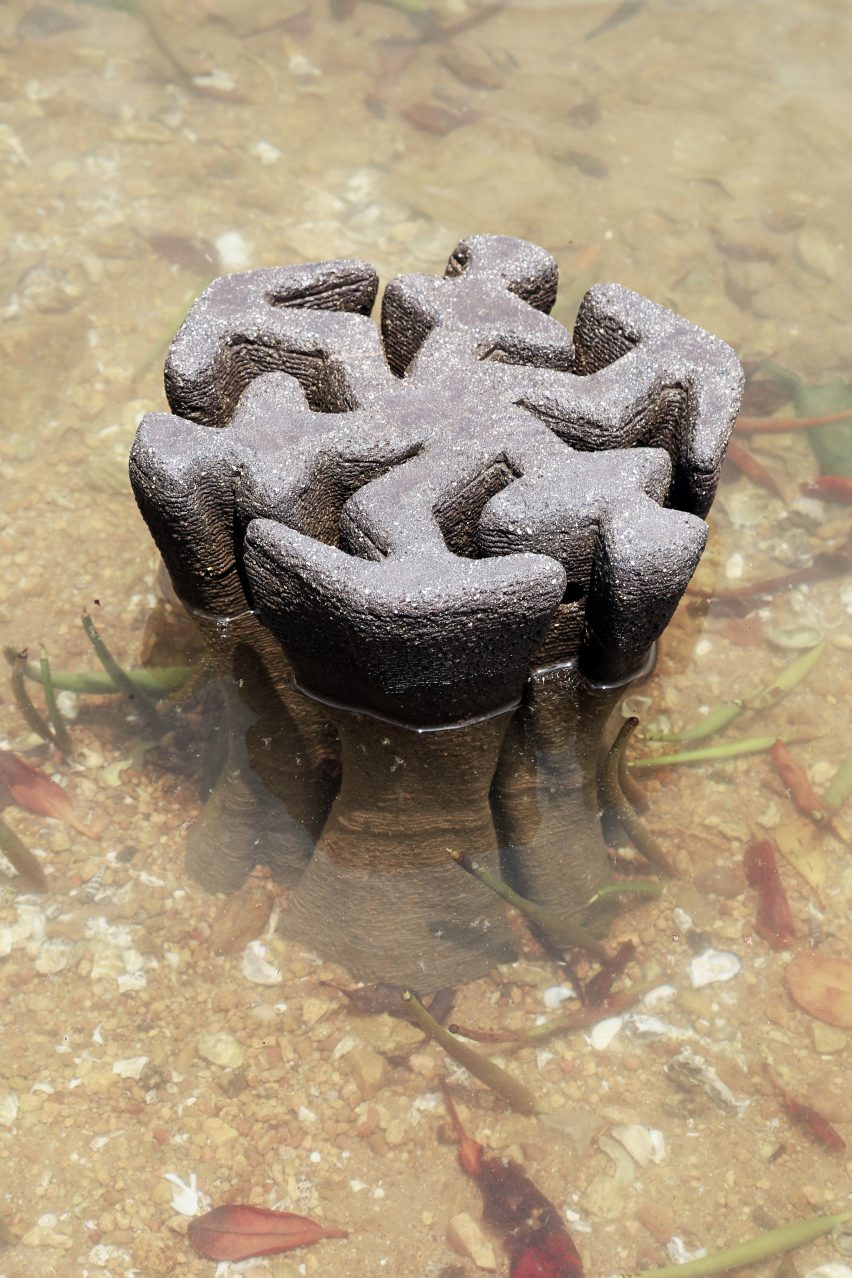
The stools are also informed by the roots of mangrove trees, which are native to this coastal region and play an important role in the marine ecosystem.
A mix of terracotta clay was extruded through the nozzle of the robotic printing device to build the stools in an additive process. The clay's dark-brown colour references the rocks on the beach, helping the seats blend in with the existing nature.
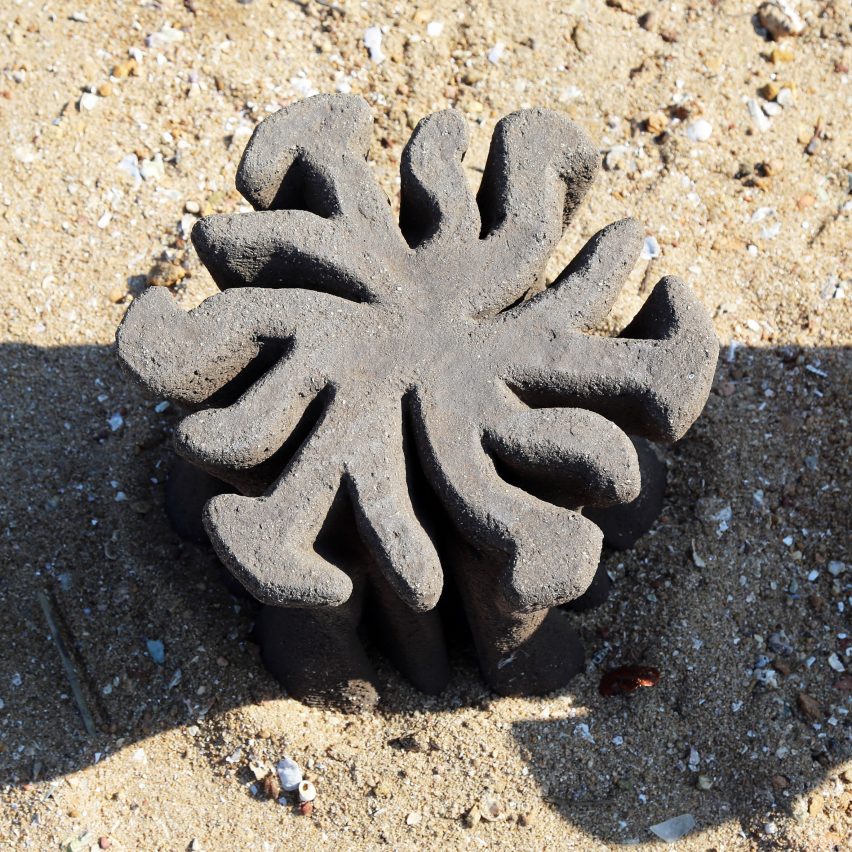
The terracotta clay has a pH level that is appropriate for use in natural settings and over time, the Tidal Stools will degrade naturally and eventually disappear without harming the environment.
The Robotic Fabrication Lab is part of the HKUrbanLabs research arm at the University of Hong Kong's Faculty of Architecture. The Faculty's setting in the heart of Hong Kong informs its research into high-density cities and the effects of rapid urbanisation.
The photography is by Christian J Lange unless stated otherwise.